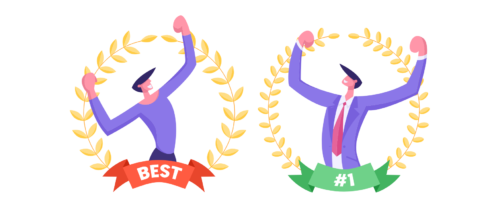
Your employees are the true assets of your company. Understanding and enhancing everything about your employees is crucial for your company’s success. Okay, we’re talking about the complete employee life cycle that impacts your company’s productivity, performance, and success.
Like your customers, your employees go through different stages in their journey with you, and enhancing that experience will only do good for you. Although you see your employees as your extended family at one time, the truth is they come and go over time. Only the change is constant. The longer your employees stay, the better; retaining employees should be one of your consistent goals. Also, evaluating each stage of your employee life cycle and improving their experience is vital.
The employee life cycle begins the moment your employee first learned about your company and ends when they exit. Usually, there are 7 stages of the employee life cycle, but here we’re digging a little deeper. We have come up with 9 stages of the employee life cycle to help you understand where most companies make a mistake so that you won’t. This article covers 9 stages of the employee life cycle and how improving each stage will help your business grow.
What is the Employee Life Cycle?
Employee Life Cycle (ELC) is all about different stages employees experience with their employer. The employee lifecycle begins when the employee gets to know his employer for the first time and continues through recruitment, onboarding, retention, offboarding, and ends when they leave the company.
In our model, there are 9 stages of the employee life cycle despite the size of your company and industry. So, let’s get started.
The 9 stages of the Employee Life Cycle are:
- Attraction
- Recruiting
- Onboarding
- Development
- Engagement
- Recognition
- Retention
- Offboarding
- Separation
Importance of Employee Life Cycle Management
Monitoring the employee lifecycle and improving it continuously helps you enhance employee experience, retain top performers, and save recruiting costs.
Employee experience will hugely impact how long that person is going to stay. Even the exit interview impacts the employee’s experience. Moreover, unknowingly your goal becomes keeping your employee who gained great knowledge and skills with you. And the costs associated with it are quite lesser than hiring a new one. When you evaluate and improve each stage of the employee life cycle, you save time, money and achieve a reputation for your employer brand.
The 9 Stages of Employee Life Cycle Management
1. Attraction
Unlike most employers think, the employee lifecycle begins even before you actually meet the candidate. Attraction is the first stage of the employee lifecycle. Employees start their journey right from when they hear about you in any form. Maybe via a job post or a blog you’ve published about your culture. Whether the candidate shows interest in your company depends on how well you maintain your employer brand.
55% of job seekers will stop applying for the job in a company that has negative reviews. So, creating employer brand awareness and adopting a great work culture is crucial for any organization.
2. Recruiting
This is the interaction stage. Your first-ever interaction with the employee happens here via phone or email. This is also the stage where the candidate and employer get to know each other, asking questions and becoming familiar with each other. The recruitment lifecycle covers interaction with the candidate and the interview process.
While most employers think it is only them who decide to continue their journey with the candidate or not, candidates also check if the employer and the culture are motivating. As most of the confusion happens here, ensure you check if the candidates’ expectations align with what you’re offering. Else, you will only hire the early leavers.

3. Onboarding
The first day of the office is overwhelming already; make sure you don’t scare them or make them feel frustrated or tired. Communicate, introduce them to their team members and work culture, train them, and offer a memorable onboarding experience to make them feel they’re in the right place.
4. Development
One of the effective ways to boost employee motivation and make them stick around is to provide opportunities for their growth. Offer them opportunities for promotions, to grow their skills, and challenge them. You will have to increase the pay when your employees upgrade their skills and move forward, which is less expensive than losing them.
5. Engagement
Employee engagement has become vital than ever. And this is where most employers fail. Keeping your employees excited about their work every day has become essential to ensure their higher performance. Engaged employees are the happier and productive people and critical contributors to the company.
6. Recognition
Employee recognition plays a crucial role in retention. Recognition, paycheck, and benefits are vital to employee engagement and happiness. Ensure you find out what makes your employees feel recognized and delighted and act accordingly.
In a survey, 58% of employees said recognition is how companies can improve employee engagement.

7. Retention
Retaining top performers is one of the toughest jobs and an essential part of your organization. However, this doesn’t have to be that daunting. Listen to what your current and former employees have to say about you offline and online. This way, you can find ways to empower and retain the top talent.
8. Offboarding
Employee resignation is not an uncommon thing. So, when they leave, do it on good terms. Ensure a smooth offboarding process, and learn why they’re leaving during the exit interview, and ask what you can do to stop them from leaving.
9. Separation
This is the final stage of the employee lifecycle. Make sure their last day is as special as their first day at your office. Once again, ask for their honest feedback and suggestions to make your workplace even better. Design a friendly goodbye with lunch or a gift. It’s also important to maintain the relationship as they may join with you anytime in the future or help you with potential referrals.
Manage Your Employee Life Cycle Efficiently with Vultus Workforce Manager
You may be excelling in two or three stages of the employee life cycle already. Well done! But that isn’t enough. In today’s competitive job market, keeping your highly skilled employees is next to impossible if you don’t have a proper employee lifecycle management strategy. You can nail it by starting slow. Leverage technology, use workforce manager to ensure smooth journey of your employees. Adapt innovative HR policies and do your best to keep your employees longer.
To receive and stay updated about related content:





